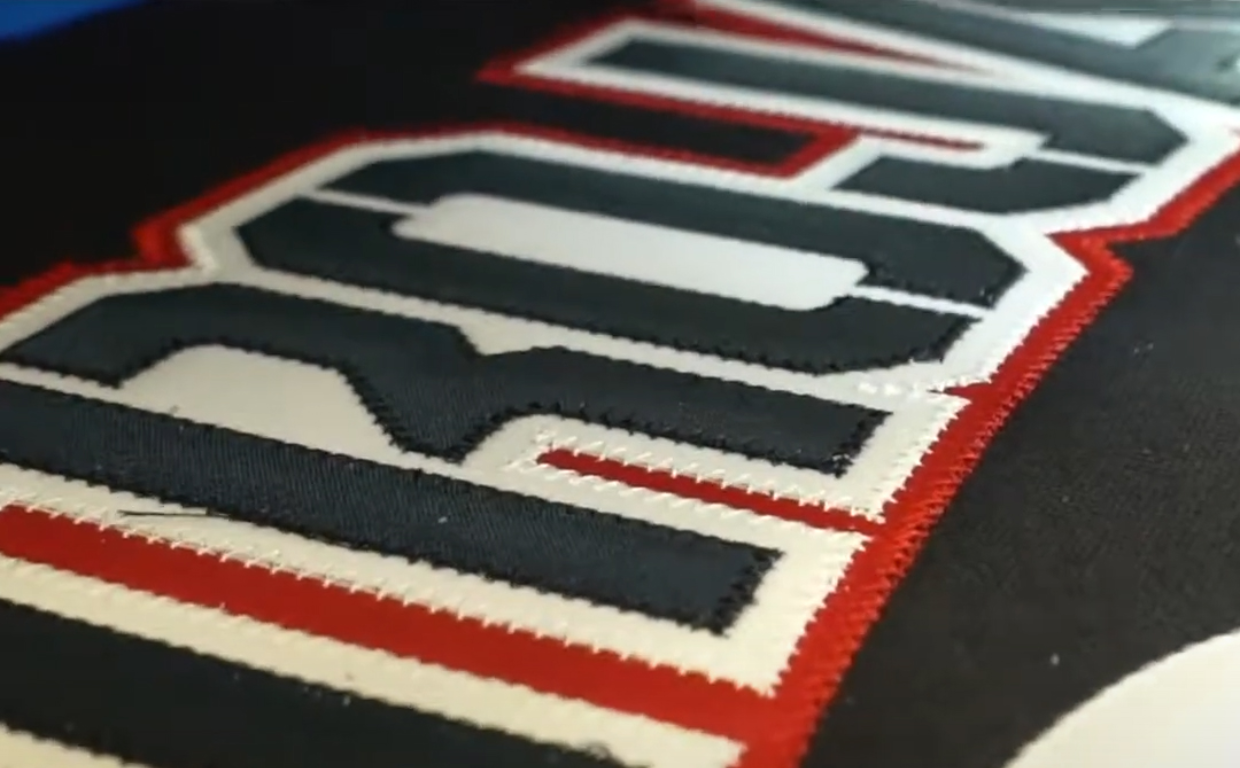Tackle twill applique combines fabric lettering with embroidery for bold, long-lasting designs. It’s widely used in sportswear, varsity jackets, and promotional apparel. At Mahi Digitizing, we ensure that every tackle twill digitized file meets high-performance standards with maximum accuracy.
Understanding Tackle Twill Applique
Tackle twill is a process that involves cutting fabric into letters or shapes and stitching them onto garments using a zig-zag or satin stitch. It’s most popular for team jerseys and university branding.
Unlike full embroidery, tackle twill uses fabric as the base for designs, which provides bold color blocks and reduced thread usage. This helps maintain the garment’s flexibility and comfort.
Moreover, the technique is cost-effective for larger logos or text due to fewer stitches and faster production times.
Its high-contrast look stands out on heavy fabrics like hoodies and jackets. As a result, tackle twill is favored by athletic teams and schools alike.
At Mahi Digitizing, we craft files that balance aesthetics and functionality, ensuring the fabric and thread work perfectly together.
Choosing the Right Fabric and Thread
When designing for tackle twill, choosing the right fabric and thread is critical. The most common material is twill, but felt or other appliqué-ready fabrics can be used depending on texture and finish.
In addition, thread choice affects the visibility and durability of the final product. Polyester thread is recommended for its strength and sheen.
Matching thread color to the twill or using contrasting tones can help amplify visual impact. It also depends on the brand or team’s style.
Ultimately, consistency between fabric and stitching improves both the look and lifespan of the patch.
We advise clients at Mahi Digitizing on selecting the ideal combination for every use case.
Setting Up the Digitized File Properly
Digitizing for tackle twill is different from standard embroidery. The file must instruct the machine to place the fabric and stitch it securely.
First, digitizers define the placement stitch, which outlines where to position the fabric piece. Next, they add tack-down stitches to hold the twill in place.
After that, a zig-zag or satin border is created to lock the fabric edge and add definition.
It’s important to use correct densities and overlaps so the applique doesn’t pucker or shift during production.
At Mahi Digitizing, our files ensure tight placement, clean borders, and seamless finishes for all tackle twill applications.
Avoiding Common Mistakes in Digitizing
Improper overlap, misalignment, and excessive stitch density are frequent errors in tackle twill digitizing. These mistakes can lead to distorted or hard-to-read designs.
Furthermore, ignoring garment type can affect the outcome. For example, stretchy or thick fabrics need adjustments in tack-down and stitch type.
Also, skipping the placement line may cause inaccurate applique positioning, ruining the entire layout.
Adding too much thread density can damage the fabric or make the patch stiff and uncomfortable to wear.
That’s why our expert digitizers follow tested guidelines to eliminate errors and improve production speed and quality.
Stitching Techniques That Work Best
Satin stitch is the most used finish for tackle twill. It offers a clean edge and strong hold around the fabric. Zig-zag stitches provide a looser finish but are faster for mass production.
Double-run stitching enhances the durability of tack-down lines, especially on heavier twill materials.
Many high-end applications use a layered finish: placement, tack-down, and satin edge, all refined for clean borders.
It’s essential to test stitch settings before going into full production. Small tweaks in length and width can make a big difference.
At Mahi Digitizing, we ensure all embroidery files include optimal stitch paths that reduce thread breaks and trimming.
Advantages of Using Tackle Twill Applique
- Bold appearance: The fabric backing creates vibrant letters that stand out from afar.
- Durability: Stitched twill lasts longer under stress and frequent wear.
- Lower stitch count: Less thread is used compared to full embroidery, saving time and cost.
- Comfort: Lighter on fabric and more breathable than solid stitched areas.
- Customization: Designers can easily switch fabric and thread combinations for fresh styles.
These benefits make tackle twill an unbeatable choice for high-impact apparel and branding.
Ideal Use Cases for Tackle Twill
Tackle twill is ideal for jerseys, sweatshirts, hoodies, varsity jackets, and sports apparel. It’s also used for fashion brands looking for a retro or athletic aesthetic.
Schools and colleges frequently use it for mascots, initials, or slogans stitched onto outerwear.
Corporate branding and event merchandise can also benefit from this technique, especially when visibility matters.
Because of its durability, it’s preferred for uniforms or gear that faces regular movement and washing.
At Mahi Digitizing, we customize tackle twill digitizing based on your specific fabric and product type.
Partner with Mahi Digitizing for Expert Results
Digitizing tackle twill requires precision, experience, and the right approach. Our team understands the exact stitch mechanics and file requirements needed for the perfect result.
We guide clients through fabric selection, file creation, and stitching strategy to make their vision a reality.
Whether you’re producing jerseys for a team or launching custom apparel, we deliver premium digitized files ready for production.
Request a free quote or contact our team today to get started with high-quality tackle twill digitizing.
Let Mahi Digitizing help you bring professional-grade designs to life with accuracy and confidence.

